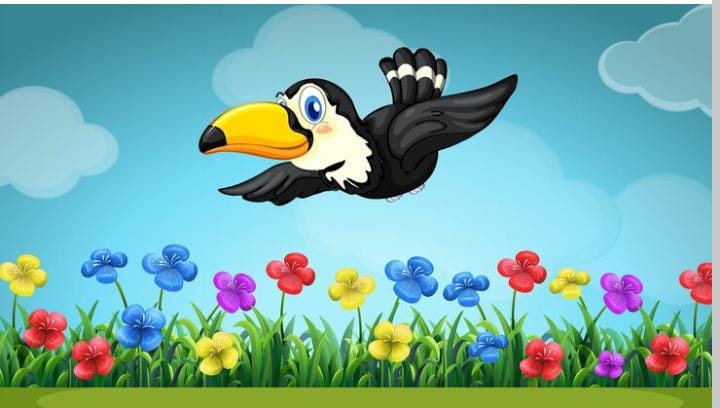The Charming Pied Wagtail – Nature’s Little Tail-Wagger That Brings Joy Everywhere
Introduction
If you’ve ever seen a small black and white bird dancing around gardens, car parks, or riversides, you’ve probably spotted the pied wagtail. This charming little bird is famous for its constant tail-wagging, cheerful nature, and ability to thrive almost anywhere in the United Kingdom and beyond.
The pied wagtail is not only a delightful sight but also a symbol of energy and adaptability. Whether hopping through cities or fluttering over meadows, this bird brings a touch of liveliness wherever it goes. In this article, we’ll dive deep into its features, habitat, behavior, and fascinating facts that make the pied wagtail one of Britain’s most loved birds.
H2: What Is a Pied Wagtail?
The pied wagtail (Motacilla alba yarrellii) is a small, black-and-white songbird belonging to the wagtail family. Its name perfectly describes it — “pied” means having two or more colors (usually black and white), and “wagtail” refers to its signature habit of constantly wagging its tail up and down.
These birds are around 18 cm long with a wingspan of about 25 to 30 cm. They have sleek, elegant bodies, long tails, and a bright, energetic personality. The male pied wagtail tends to have bolder black markings, while the female appears slightly greyer, especially outside the breeding season.
H2: Where Can You Find the Pied Wagtail?
H3: Natural Habitat
The pied wagtail can be found almost everywhere across the UK — from rural farmlands and riversides to busy towns and city centres. They adapt easily to different environments, often seen fluttering near water bodies or open spaces where insects are abundant.
During the colder months, many pied wagtails gather in large roosts in town centres, on rooftops, or near warm buildings like supermarkets. Their adaptability helps them survive harsh winters and urban challenges.
H3: Global Distribution
While the pied wagtail is mainly seen in Britain and Ireland, it’s actually a subspecies of the white wagtail, which is found throughout Europe and Asia. Some migrate south in winter, but British birds often stay put, preferring the comfort of warmer city spots.
H2: Diet and Feeding Habits
The pied wagtail is an insect-lover! It primarily feeds on small insects, flies, beetles, and spiders. Its quick and jerky movements help it catch prey mid-air or while running swiftly across the ground.
In winter, when insects are scarce, the pied wagtail may turn to crumbs, seeds, or even explore urban areas for leftovers. You can often see them hopping around outdoor cafés or car parks, looking for food scraps.
H2: Breeding and Nesting Behavior
Spring is a busy time for the pied wagtail. Between April and July, they build their nests in walls, buildings, or sheltered spaces close to humans. The female lays about 5 to 6 eggs, which she incubates for nearly two weeks.
After hatching, both parents take care of the chicks, feeding them tirelessly until they are ready to fly. The pied wagtail’s loyalty to its nesting sites is remarkable — they often return to the same place year after year.
H2: Interesting Facts About the Pied Wagtail
- The pied wagtail is known for its constant tail movement, which may help it flush out insects or signal to other birds.
- They are highly social birds, often seen roosting in flocks of hundreds during winter nights.
- Despite their delicate look, pied wagtails are tough survivors — thriving in both countryside and city life.
- Their cheerful calls and energetic dance make them easy to recognize even from a distance.
- The pied wagtail has inspired poems, folk tales, and even songs due to its lively and endearing behavior.
H2: Symbolism and Meaning of the Pied Wagtail
In many cultures, the pied wagtail symbolizes happiness, energy, and resilience. Because it never seems to rest and keeps moving its tail, people associate it with a “go-getter” attitude. Seeing a pied wagtail is often considered a positive sign — representing adaptability and joy in small things.
Bird watchers and nature lovers adore this species not only for its beauty but for the message it carries: stay active, stay cheerful, and keep moving forward no matter what.
H2: Why the Pied Wagtail Matters for the Environment
The pied wagtail plays an essential role in nature. By feeding on insects, it helps control pests naturally, contributing to ecological balance. Its presence also indicates a healthy environment, as wagtails thrive where insect life is rich.
Protecting the pied wagtail and its habitat is important. Encouraging green spaces, reducing pollution, and avoiding insecticides can help these delightful birds continue to thrive in both towns and rural areas.
Conclusion
The pied wagtail is more than just a bird — it’s a tiny symbol of joy, adaptability, and life. From city streets to quiet riversides, its cheerful wagging tail and chirping song remind us of nature’s charm, even in the busiest places.
As we appreciate this little wonder, let’s also remember its message: stay curious, stay energetic, and keep wagging through life’s challenges — just like the pied wagtail does every single day.
FAQs About the Pied Wagtail
Q1: What does a pied wagtail eat?
A pied wagtail mainly eats insects like flies, beetles, and spiders but can also eat crumbs and seeds in urban areas.
Q2: Where can I see a pied wagtail?
You can spot pied wagtails almost everywhere — parks, gardens, riversides, car parks, and even city centres.
Q3: Why do pied wagtails wag their tails?
The tail-wagging may help flush out insects, signal to other birds, or balance while walking and running.
Q4: Do pied wagtails migrate?
Some pied wagtails migrate south during winter, but many UK birds stay local, roosting in warmer urban areas.
Q5: What does the pied wagtail symbolize?
The pied wagtail symbolizes joy, resilience, and adaptability — a reminder to keep moving forward with energy and positivity.
